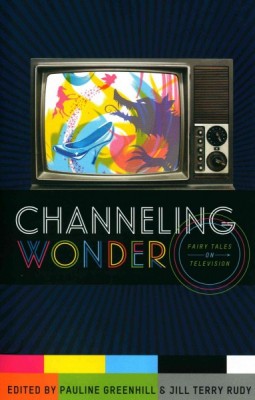| Channeling Wonder: Fairy Tales on Television Contributor(s): Greenhill, Pauline (Editor), Rudy, Jill Terry (Editor) |
|
 |
ISBN: 0814339220 ISBN-13: 9780814339220 Publisher: Wayne State University Press OUR PRICE: $32.66 Product Type: Paperback Published: October 2014 |
| Additional Information |
| BISAC Categories: - Performing Arts | Television - History & Criticism - Literary Criticism | Science Fiction & Fantasy - Social Science | Folklore & Mythology |
| Dewey: 791.456 |
| Series: Series in Fairy-Tale Studies |
| Physical Information: 1.13" H x 6.14" W x 8.96" (1.65 lbs) 448 pages |
| Descriptions, Reviews, Etc. |
| Publisher Description: Television has long been a familiar vehicle for fairy tales and is, in some ways, an ideal medium for the genre. Both more mundane and more wondrous than cinema, TV magically captures sounds and images that float through the air to bring them into homes, schools, and workplaces. Even apparently realistic forms, like the nightly news, routinely employ discourses of "once upon a time," "happily ever after," and "a Cinderella story." In Channeling Wonder: Fairy Tales on Television, Pauline Greenhill and Jill Terry Rudy offer contributions that invite readers to consider what happens when fairy tale, a narrative genre that revels in variation, joins the flow of television experience. Looking in detail at programs from Canada, France, Italy, Japan, the UK, and the U.S., this volume's twenty-three international contributors demonstrate the wide range of fairy tales that make their way into televisual forms. The writers look at fairy-tale adaptations in musicals like Rodgers and Hammerstein's Cinderella, anthologies like Jim Henson's The Storyteller, made-for-TV movies like Snow White: A Tale of Terror, Bluebeard, and the Red Riding Trilogy, and drama serials like Grimm and Once Upon a Time. Contributors also explore more unexpected representations in the Carosello commercial series, the children's show Super Why , the anime series Revolutionary Girl Utena, and the live-action dramas Train Man and Rich Man Poor Woman. In addition, they consider how elements from familiar tales, including "Hansel and Gretel," "Little Red Riding Hood," "Beauty and the Beast," "Snow White," and "Cinderella" appear in the long arc serials Merlin, Buffy the Vampire Slayer, and Dollhouse, and in a range of television formats including variety shows, situation comedies, and reality TV. Channeling Wonder demonstrates that fairy tales remain ubiquitous on TV, allowing for variations but still resonating with the wonder tale's familiarity. Scholars of cultural studies, fairy-tale studies, folklore, and television studies will enjoy this first-of-its-kind volume. |